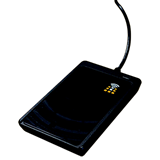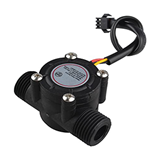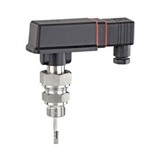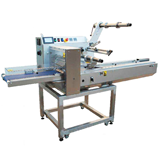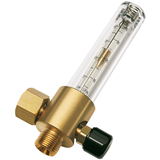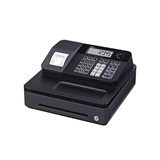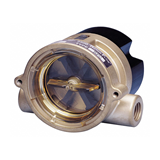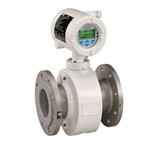Key Takeaways
- Your cash flow forecast is your most critical tool. A rolling 13-week forecast, updated weekly, is the industry standard. It provides an early warning system for potential shortfalls, allowing you to act before a crisis hits
- High-risk industries: Sectors like construction, manufacturing, and transport are most vulnerable to cash flow problems, as they must manage high equipment costs while often waiting on long payment cycles from customers.
- Calculate the Total Cost of Ownership (TCO). The monthly loan repayment is only part of an asset's cash outflow. You must also budget for fuel, insurance, scheduled maintenance, and provisions for major repairs to understand the true cash impact of your equipment.
- Late payments are a cash flow killer. Invoice immediately upon job completion and use accounting software that automates reminders The Australian Small Business and Family Enterprise Ombudsman (ASBFEO) reports that 25% of small businesses have experienced payment times of 120 days or more.
- Use finance to protect your cash. Paying cash for a large asset can drain your reserves A chattel mortgage provides an immediate cash boost by allowing you to claim the GST upfront, while leasing can offer lower monthly payments to preserve working capital
- Build a cash buffer of 3-6 months of operating expenses. This reserve is your safety net for unexpected major repairs or a sudden downturn in work, ensuring an equipment failure doesn't become a business failure.
Introduction: The lifeblood of your industrial business
For Australian businesses in equipment-heavy sectors like construction, manufacturing, and transport, 2025 continues to present a challenging economic landscape. With high input costs and tight margins, the old adage "revenue is vanity, profit is sanity" needs an addendum: "cash flow is king." While your balance sheet might show valuable assets, it's the cash in the bank that pays your wages, covers your fuel bills, and keeps the lights on.
According to a recent Judo Bank SME Banking Insights Report, cash flow management remains one of the top three concerns for Australian small and medium-sized enterprises. For businesses whose primary assets are large, expensive pieces of machinery, this challenge is magnified. This article is a practical guide for Australian industrial business owners on how to move from reactive financial management to proactive cash flow planning, ensuring you have the liquidity to handle unexpected costs and the confidence to invest in growth.
Which industries are most exposed to cash flow risk?
While every business lives and dies by its cash flow, some sectors are uniquely vulnerable due to their operational structure. Industries that combine high capital expenditure with long or unpredictable payment cycles must treat cash flow planning as a core strategic activity, not just a bookkeeping task.
The following sectors, common in the Australian industrial landscape, are particularly exposed:
- Construction and Civil: This sector is a perfect storm for cash flow challenges. It requires massive upfront investment in heavy machinery, combined with high project-based costs for materials and labour. Revenue often arrives in lumpy milestone payments, creating significant gaps between spending and earning that must be carefully managed.
- Manufacturing: High upfront costs for raw materials and significant ongoing investment in production line equipment put constant pressure on cash reserves. When dealing with large corporate or wholesale customers, extended payment terms of 60 or 90 days can further strain working capital, even when the business is profitable on paper.
- Transport and Logistics: The entire business model is built on a fleet of expensive, high-maintenance assets. Volatile and immediate cash drains, like fuel and road user charges, must be paid regularly, while payments from large clients on freight contracts can take months to come through.
- Mining Services: This industry is defined by extremely high-value, specialised equipment and project-based contracts with major resource companies. These contracts often come with long and complex payment terms, making a robust cash flow forecast essential for survival between major projects.
The cash flow forecast: Your business’s early warning system
You cannot manage what you do not measure. A cash flow forecast is the single most important financial tool for an equipment-heavy business. It's not a complex accounting task; it's a simple prediction of the cash moving in and out of your business over a set period.
The industry best practice is a 13-week rolling cash flow forecast, typically managed in a spreadsheet or through your accounting software. This gives you a three-month window to anticipate and react to potential shortfalls.
Your forecast should track:
- Cash In: Expected payments from customers, asset sales, and any financing drawdowns.
- Cash Out (Fixed): Predictable monthly costs like rent, loan repayments, and salaried staff
- Cash Out (Variable): Costs that fluctuate with activity, such as fuel, casual wages, and materials.
- Major One-Off Payments: Scheduled expenses like BAS payments, insurance premiums, and major equipment services.
By updating this weekly, you will see a potential cash crunch weeks or months in advance, giving you time to chase overdue invoices, arrange a short-term credit line, or delay non-essential spending.
Taming your outflows: The Total Cost of Ownership (TCO)
For an equipment-heavy business, the biggest drain on cash is often misunderstood. It's not just the monthly loan repayment; it's the total cost of keeping that machine running. This is the Total Cost of Ownership (TCO).
A realistic scenario: The new excavator
A small civil construction company in regional Victoria buys a new excavator. The finance repayment is $4,000 per month. However, the true monthly cash outflow looks very different:
- Loan Repayment: $4,000
- Fuel (average use): $1,500
- Insurance: $400
- Scheduled Servicing (pro-rata): $350
- Provision for major repairs (e.g., track replacement): $500
- Total Monthly Cash Outflow: $6,750
Failing to budget for the full $6,750, nearly 70% more than the repayment alone, is a classic cash flow mistake. Your forecast must be based on the TCO of your assets, not just their finance cost.
Accelerating your inflows: Getting paid faster
Improving your cash flow isn't just about managing costs; it's about getting the money you've earned into your bank account faster. According to ASBFEO, long and late payment times are a critical issue, putting immense strain on small businesses
- Invoice immediately and accurately. Don't wait until the end of the month. Send a clear, itemised invoice the moment a job is complete.
- Offer multiple payment options. Modern accounting software (like Xero or MYOB) allows customers to pay directly from the invoice via credit card or direct debit.This is often faster than waiting for a manual bank transfer.
- Automate your reminders. Use your software to automatically send polite follow-up reminders for overdue invoices. This depersonalises the process and ensures no payment is forgotten.
- Clear payment terms. Your quote and contract should clearly state your payment terms (e.g., 7, 14, or 30 days). For large projects, negotiate upfront milestone payments to ensure cash is flowing throughout the job.
Strategic financing: Using debt to protect your cash
Financing major equipment purchases is a powerful cash flow management tool. It allows you to acquire an income-producing asset without depleting the cash reserves needed for day-to-day operations.
- Chattel Mortgage: This is often the most cash-flow-positive option in Australia. By taking ownership of the asset immediately, you can claim the full GST on the purchase price back on your next BAS. For a $110,000 purchase, this means a $10,000 cash injection back into your business.
- Operating Lease: A lease can offer lower monthly payments than a loan, further preserving your cash. This can be a smart option for assets you may want to upgrade in a few years, though you don't build equity.
- Working Capital Loans: For short-term gaps, consider a flexible overdraft or line of credit. This provides a safety net to cover expenses while you're waiting for a large customer payment to come in.
Building your buffer: The non-negotiable cash reserve
In an equipment-heavy business, unexpected failures are a matter of "when," not "if." A major engine or hydraulic failure can result in a repair bill of tens of thousands of dollars, an expense that can be fatal to a business with no cash reserves.
Your goal should be to build and maintain a cash buffer equivalent to three to six months of your fixed operating expenses. This reserve is not for investment or expansion; it is your emergency fund. It provides the peace of mind that a single, unexpected event won't derail your entire operation and gives you the strength to negotiate with suppliers and lenders from a position of stability, not desperation.
Stress-testing your business: A "what-if" framework
A single forecast is a prediction; scenario planning prepares you for reality. To build a resilient business, stress-test your numbers by maintaining three versions: a Best Case (e.g., winning a large contract), a Worst Case (e.g., a major client paying 60 days late), and your Most Likely Case.
Next, model the cash impact of specific, realistic risks. What happens if fuel prices jump 20% for a quarter, or a critical machine requires a $30,000 unbudgeted repair? Quantifying these threats shows you your true financial exposure.
Finally, create a simple contingency plan for each major risk. Having a pre-made decision, like drawing on a line of credit or pausing capital spending, allows you to act decisively and calmly during a crisis, not in a panic.
Conclusion
For Australian industrial businesses, mastering cash flow is the key to resilience and sustainable growth. It requires a disciplined, forward-looking approach that goes beyond simply checking the bank balance. By implementing a regular forecasting process, understanding the true cost of your equipment, actively managing your invoicing, and using finance strategically, you can take control of your cash flow. This proactive management provides the stability to weather any economic storm and the confidence to seize opportunities for investment and expansion


